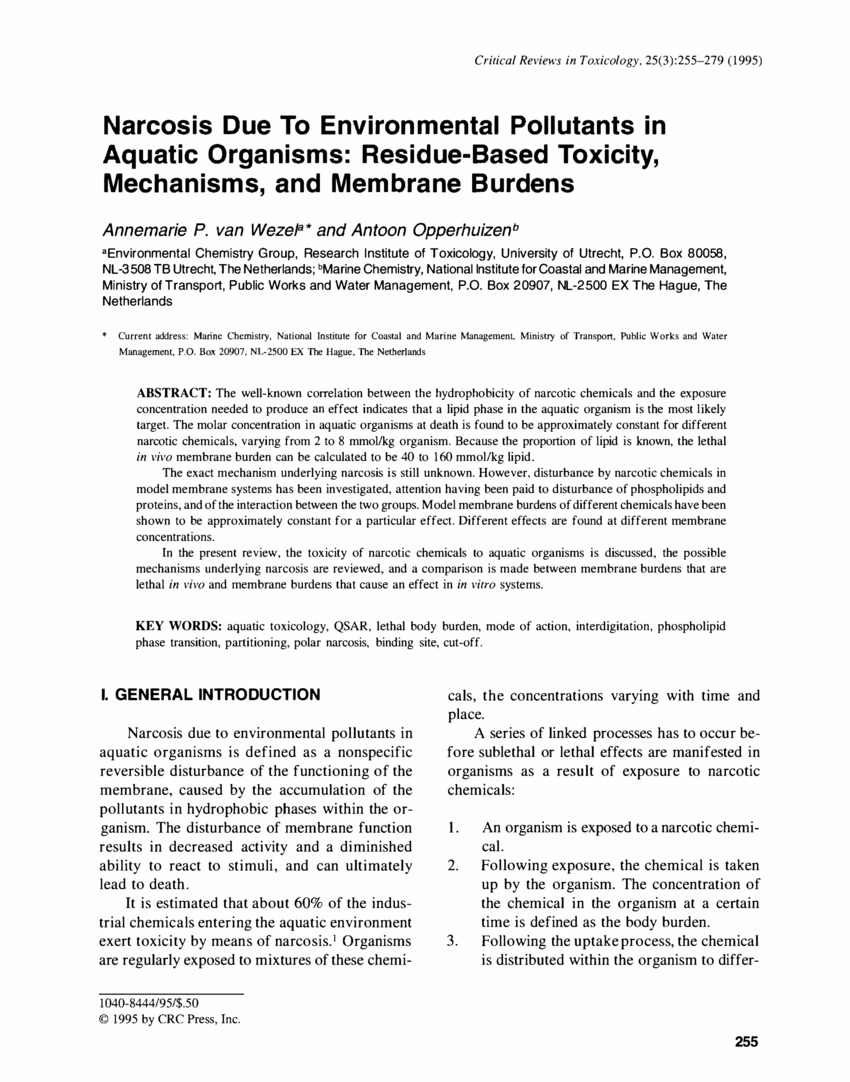Journal Article
AccessNarcosis Due to Environmental Pollutants in Aquatic Organisms: Residue-Based Toxicity, Mechanisms, an Membrane Burdens
The well-known correlation between the hydrophobicity of narcotic chemicals and the exposure concentration needed to produce an effect indicates that a lipid phase in the aquatic organism is the most likely target. The molar concentration in aquatic organisms at death is found to be approximately constant for different narcotic chemicals, varying from 2 to 8 mmol/kg organism. Because the proportion of lipid is known, the lethalin vivo membrane burden can be calculated to be 40 to 160 mmol/kg lipid. ...
Publisher - Informa PLC
Subjects - Toxicity
Citation: Van Wezel AP, Opperhuizen A. 1995. Narcosis Due to Environmental Pollutants in Aquatic Organisms: Residue-Based Toxicity, Mechanisms, an Membrane Burdens. Crit. Rev. Toxicol.; 25(3):255-279 http://dx.doi.org/10.3109/10408449509089890
